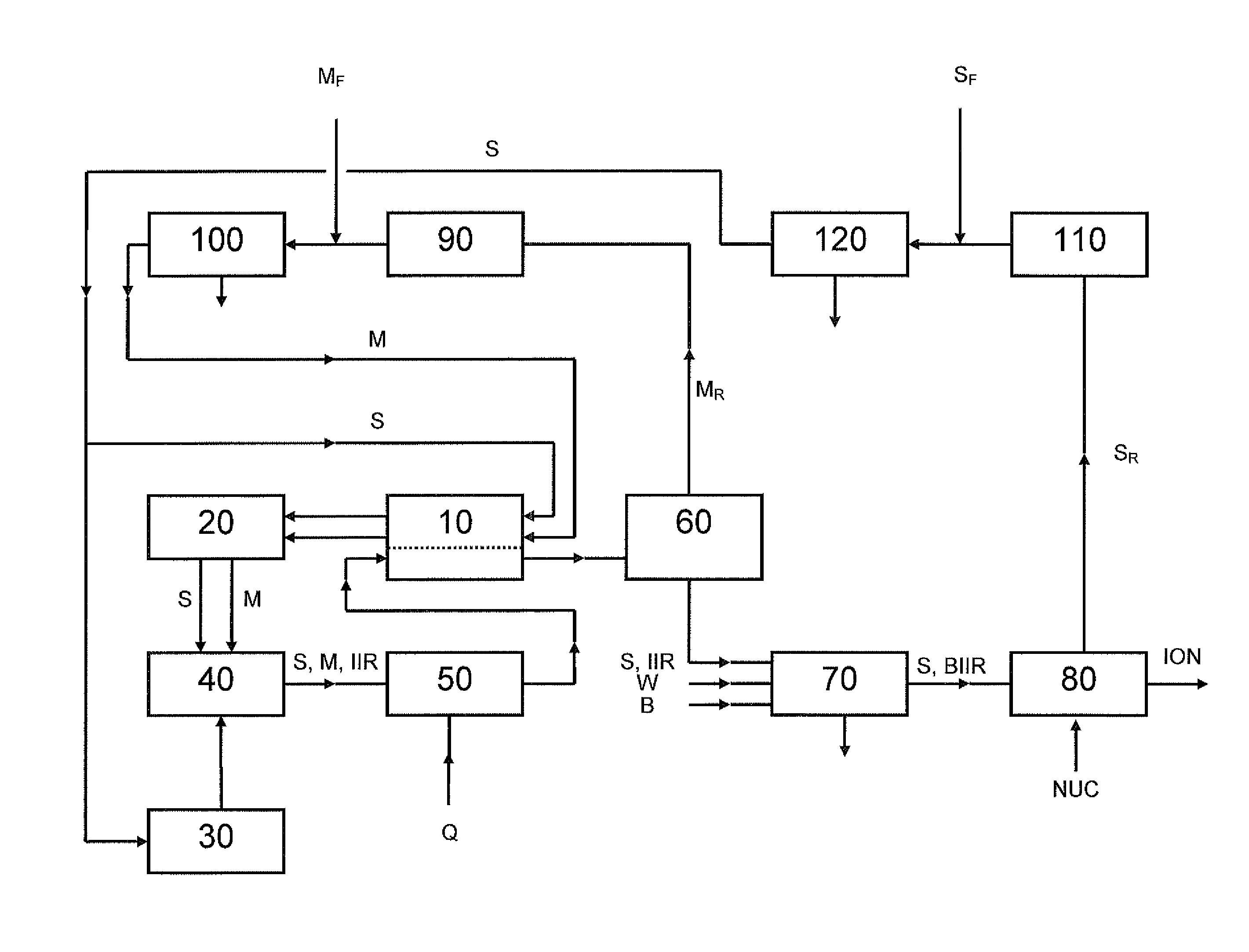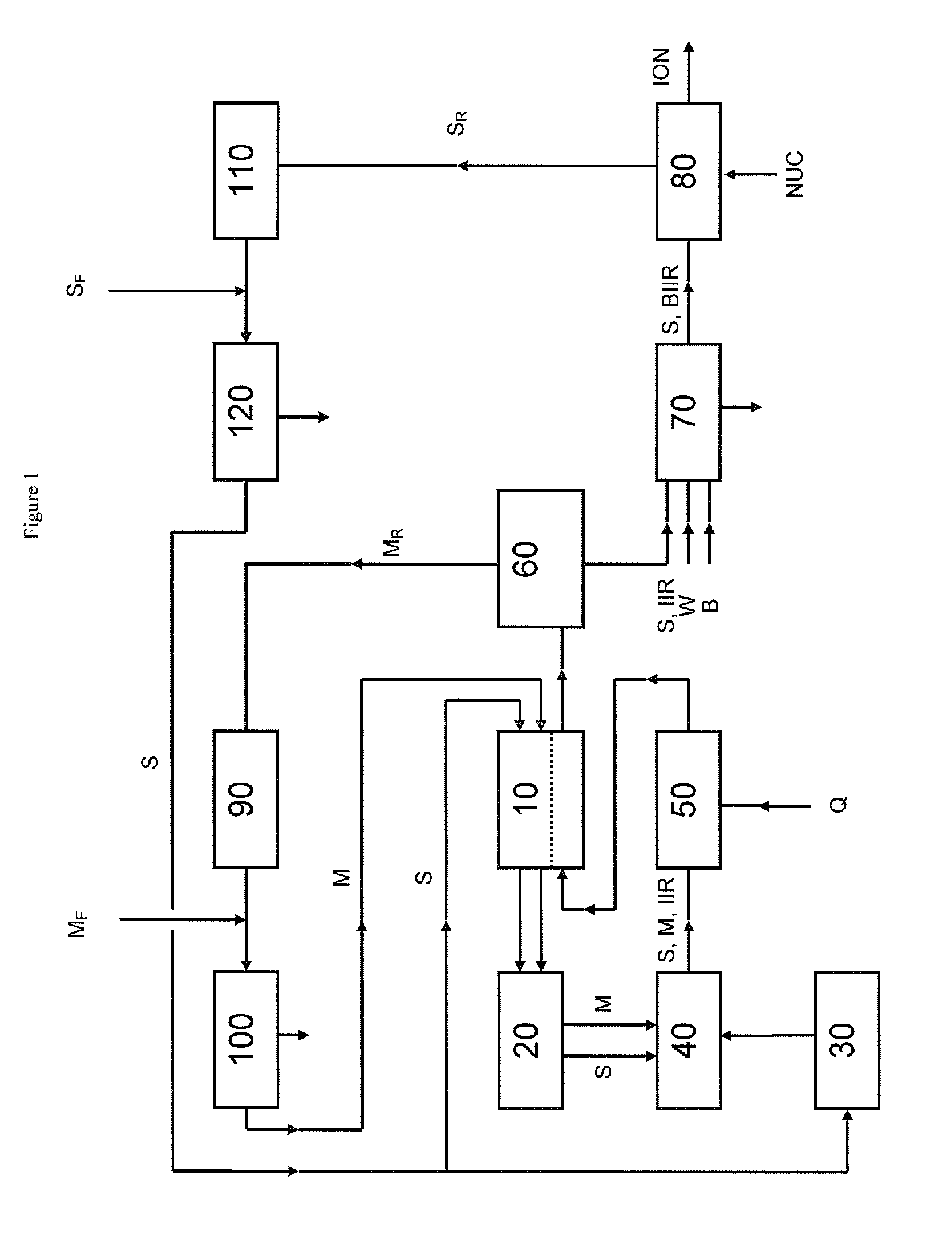Process for production of halobutyl ionomers
- Summary
- Abstract
- Description
- Claims
- Application Information
AI Technical Summary
Benefits of technology
Problems solved by technology
Method used
Image
Examples
example 1
Polymerization and Distillation
[0087]Key elements of the process described in FIG. 1 have been operated at pilot scale with reactors of 2 litre total capacity running in a continuous mode. Feeds to the reactors were 3.87 kg / h of isobutene, 0.09 kg / h of isoprene and 2.0 kg / h of hexane giving a monomer / common aliphatic medium mass ratio of 66:34. The reaction temperature used was −65° C. and a solution having a solids content of 16 wt % was produced. This material had a weight average molecular weight of about 440 kg / mol and an isoprene content of about 1.7 mol-%. The solution from the reactors was fed to a distillation column with 40 trays and separation of the monomers from the rubber solution was performed. The solution was preheated to 42° C. and a re-boiler was used at the bottom of the column to maintain a bottom temperature of 113° C. A reflux condenser was used to return part of the overhead stream to the top of the column maintaining a temperature there of 36° C. The separati...
example 2
[0089]The separated rubber solution of Example 1 was halogenated using pilot scale bromination equipment. Supplemental common aliphatic medium in an amount of 10% was added to the separated rubber solution in order to lower the viscosity. A brominated butyl polymer containing 1.6% bromine is produced in the separated rubber solution. The brominated separated rubber solution is then finished using conventional drying and finishing techniques.
example 3
Preparation of Phosphonium Ionomer
[0090]In a 2 L Parr reactor, 100 g bromobutyl rubber of Example 2 is dissolved in 1000 mL of hexanes. To this, 4 g of triphenylphosphine is added and allowed to react for 60 min at a temperature of 100° C. The polymer cement is coagulated in ethanol and the resulting polymer is dried and analyzed by 1H and 31P NMR. A high ionomer content was confirmed.
PUM
| Property | Measurement | Unit |
|---|---|---|
| Temperature | aaaaa | aaaaa |
| Temperature | aaaaa | aaaaa |
| Temperature | aaaaa | aaaaa |
Abstract
Description
Claims
Application Information
 Login to View More
Login to View More - R&D
- Intellectual Property
- Life Sciences
- Materials
- Tech Scout
- Unparalleled Data Quality
- Higher Quality Content
- 60% Fewer Hallucinations
Browse by: Latest US Patents, China's latest patents, Technical Efficacy Thesaurus, Application Domain, Technology Topic, Popular Technical Reports.
© 2025 PatSnap. All rights reserved.Legal|Privacy policy|Modern Slavery Act Transparency Statement|Sitemap|About US| Contact US: help@patsnap.com


